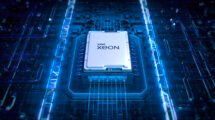MediaTek’s Helio X20 and X25 deca-core processors have started to feature in smartphones. Some of the most popular ones are the Meizu Pro 6, Meizu MX6, and Vernee Apollo Lite. The Taiwanese chip maker is reportedly working on the next year model- the Helio X30.
The Helio X30 will be a deca-core processor. The company claims that it offers better performance, power efficiency, and network connectivity. MediaTek’s chief operating officer Zhu Shangzu released some additional details about the upcoming chip.
MediaTek Helio X30 Features
The first feature that catches the eye is that the Helio X30 will be the first 10nm processor by the company. The company’s recent chips have been made using a 28nm or 16nm process. The move is meant to guarantee improvements in performance and battery efficiency.
The new processor is also said to feature an enhanced modem that enables support for more mobile broadband network bands.
The X30 that is supposed to be manufactured in 10nm FinFET architecture might take as long as a year to see the light of smartphone. This means that it won’t be out until the second half of 2017. However MediaTek is known to have heating and design issues, and if they run into either one of them, this waiting period may be extended.
One of the things about ARM’s Mali lineup is that its GPU is quite inferior to the likes of Qualcomm’s Adreno and Imagination Technologies. According to a post on Cnbeta, Helio X30 is going to come with a customized GPU from Imagination Technologies’ PowerVR Series 7 graphic chips. Apple’s iPhone 6s family and iPad Pro have with such GPUs, so a similar performance and graphics can be expected.
Helio X30 will also provide support for either of two modems: Cat.10 or Cat.12 LTE. It has been said to feature an 8GB of LPDDR4 memory and support the UFS 2.1 memory standard.
As far as the processor configuration is concerned, Helio X30 will feature a new processor from ARM (as mentioned earlier), and that’s the Cortex-A35. This one will replace Cortex-A53 and tear down low-end tasks, while the remaining cores should be able to tackle the more demanding tasks.




